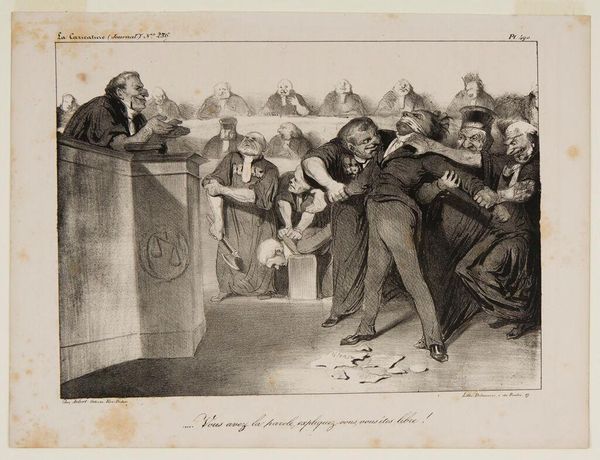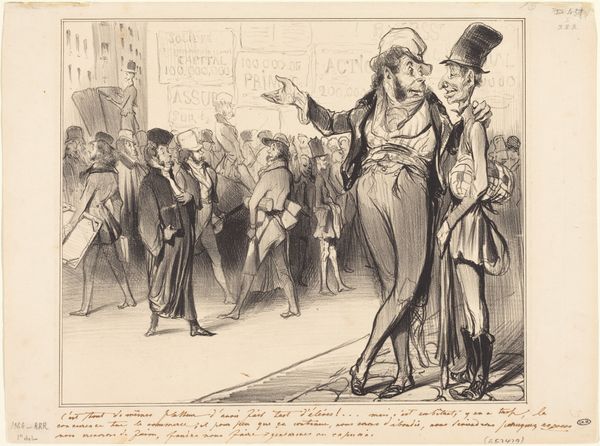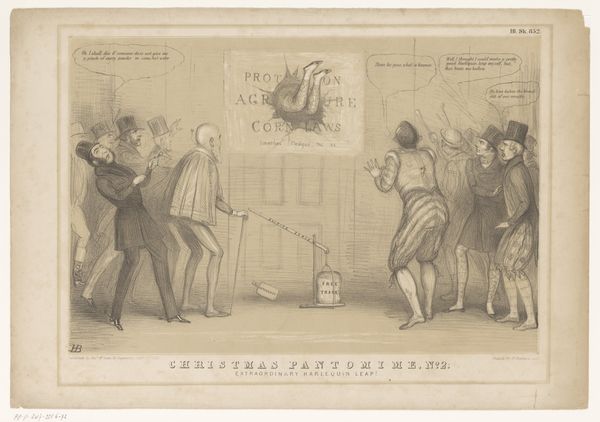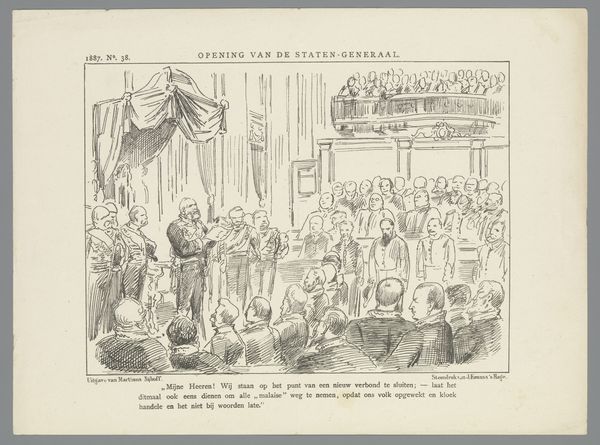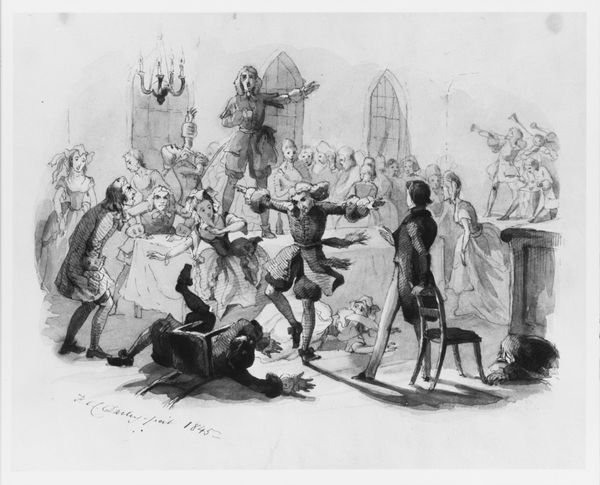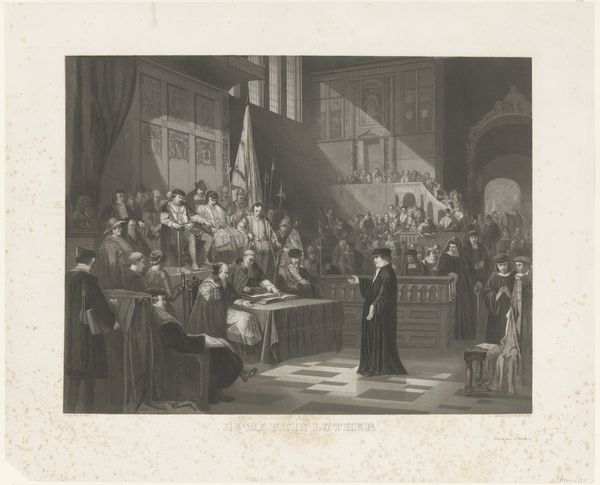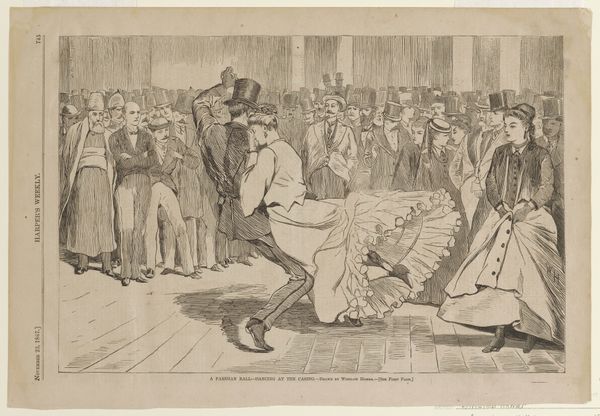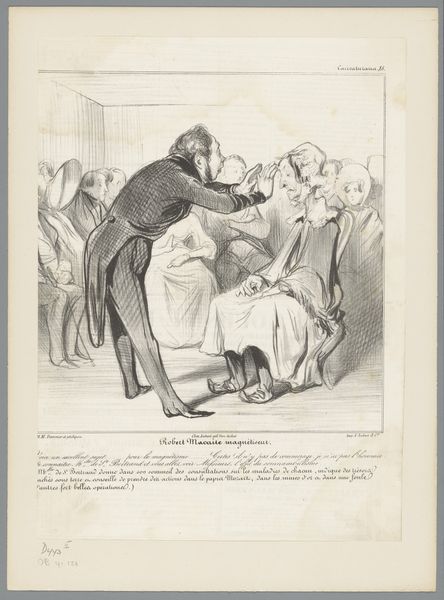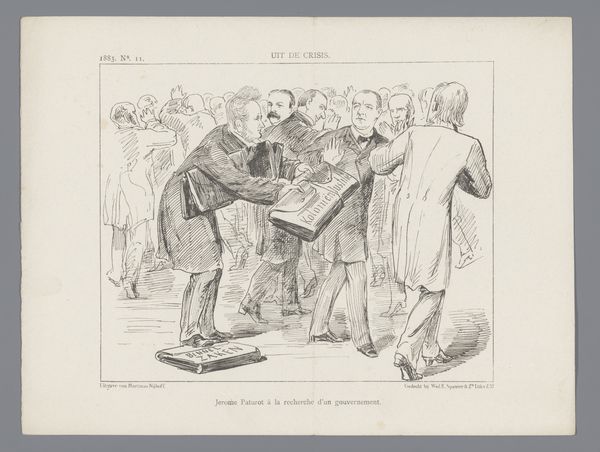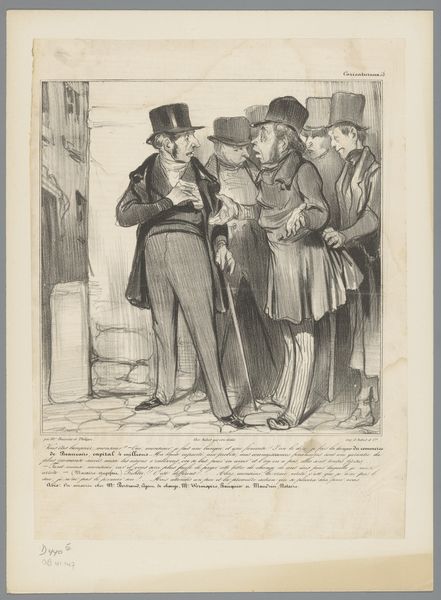
drawing, lithograph, print
#
pencil drawn
#
drawing
#
16_19th-century
#
lithograph
# print
#
caricature
#
pencil sketch
#
pencil drawing
#
romanticism
#
genre-painting
#
history-painting
#
realism
Dimensions: height 273 mm, width 354 mm
Copyright: Rijks Museum: Open Domain
Curator: This lithograph by Honoré Daumier, made in 1835, is titled "Karikatuur van een zitting van het tribunaal," or "Caricature of a Tribunal Session," and it's currently held at the Rijksmuseum. What strikes you about it? Editor: It’s viscerally unsettling. The chaos of the central figures, the detached expressions of the judges in the background…there’s a sense of deeply unjust proceedings unfolding. Curator: Daumier was a master of social critique. Consider the context of 1830s France: a period of political upheaval following the July Revolution. This work serves as an indictment of the judicial system, pointing to the ways legal processes were often manipulated to serve the interests of the powerful. The caricature style is intended to create the grotesque in those who uphold authority. Editor: Absolutely, and the figures are packed with symbolic meaning. We have what appears to be the accused being silenced as the judicial figures are faceless and monstrous. Even the papers littering the ground become symbolic fragments of a system in disarray. What do the scales behind the presiding judge reference? Curator: The scales of justice. Notice, though, how they're integrated almost casually into the design of the courtroom, their implied significance undermined by the blatant struggle taking place front and center. Daumier uses a very realistic style that satirizes the contemporary institution itself. There is the sense of dehumanization rampant throughout the print, achieved via grotesque caricatures. Editor: The darks and lights enhance the unsettling atmosphere too, as does the medium: a lithograph, which allows for great tonal variation to underscore the social realism and satirical aim. It makes you consider whose interests are really being served in that room and society at large. Daumier manages to communicate all this very powerfully through symbolic cues, like the shovel wielded close to a figure's head! Curator: Ultimately, Daumier’s work resonates because it's not just about a specific trial or a particular judge. Editor: It is a timeless observation on how power, justice, and oppression continue to entangle, and what to see in its representation as icon. The courtroom persists as a battleground across eras.
Comments
No comments
Be the first to comment and join the conversation on the ultimate creative platform.
